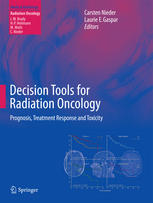

Most ebook files are in PDF format, so you can easily read them using various software such as Foxit Reader or directly on the Google Chrome browser.
Some ebook files are released by publishers in other formats such as .awz, .mobi, .epub, .fb2, etc. You may need to install specific software to read these formats on mobile/PC, such as Calibre.
Please read the tutorial at this link: https://ebookbell.com/faq
We offer FREE conversion to the popular formats you request; however, this may take some time. Therefore, right after payment, please email us, and we will try to provide the service as quickly as possible.
For some exceptional file formats or broken links (if any), please refrain from opening any disputes. Instead, email us first, and we will try to assist within a maximum of 6 hours.
EbookBell Team

4.7
106 reviewsA look at the recent oncology literature or a search of the common databases reveals a steadily increasing number of nomograms and other prognostic models. These models may predict the risk of relapse, lymphatic spread of a given malignancy, toxicity, survival, etc. Pathology information, gene signatures, and clinical data may all be used to compute the models. This trend reflects increasingly individualized treatment concepts, the need for approaches that achieve a favorable balance between effectiveness and side-effects, and the goal of optimal resource utilization reflecting prognostic knowledge. In order to avoid misuse, it is important to understand the limits and caveats of prognostic and predictive models. This book provides a comprehensive overview of such decision tools for radiation oncology, stratified by disease site, which will enable readers to make informed choices in daily clinical practice and to critically follow the future development of new tools in the field.